Vascular access type and hemodialysis patient outcomes
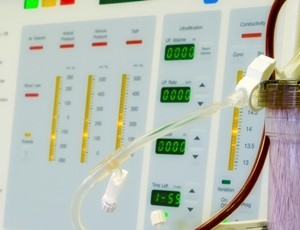
This study aimed to examine the impact of VA type on cardiovascular and all-cause mortality as well as the predictors for outcome in elderly Chinese patients” You et al (2019). Abstract: OBJECTIVES: Current studies suggest arteriovenous fistula (AVF) and arteriovenous graft as superior vascular access (VA) types for elderly hemodialysis (HD) patients due to better […]
Review of patients with lower extremity dialysis vascular access
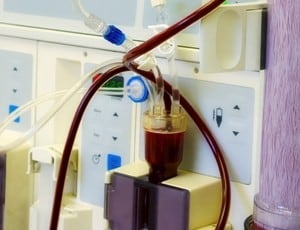
Lower extremity arteriovenous (AV) access is an alternative when upper extremity access options have been exhausted. Our goal was to assess short- and medium-term outcomes of lower extremity hemodialysis access” Pike et al (2019). Abstract: OBJECTIVE: Lower extremity arteriovenous (AV) access is an alternative when upper extremity access options have been exhausted. Our goal was […]
Analysis of central venous catheter-based hemodialysis starts
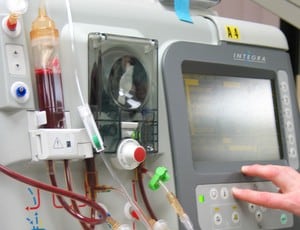
Most patients in the United States initiate hemodialysis (HD) with a central venous catheter (CVC) despite a significantly increased morbidity and mortality associated with their use” Liebman and Chang et al (2019). Abstract: Most patients in the United States initiate hemodialysis (HD) with a central venous catheter (CVC) despite a significantly increased morbidity and mortality […]
Malposition of hemodialysis catheter into the hepatic veins
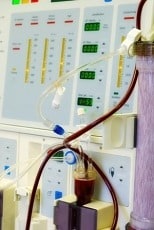
Here we present a 44 year old female hemodialysis patient with a malpositioned permanent hemodialysis catheter, catheter tip was found in hepatic vein after three months of insertion” Yucel and Gumusel et al (2019). Abstract: Permanent central vein catheter for hemodialysis is a choice for hemodialysis vascular access. Permanent dialysis catheters may be inserted through […]
Staphylococcus aureus colonization in hemodialysis patients

We prospectively followed a cohort of 86 hemodialysis patients from an outpatient dialysis center over 25 months analyzing S. aureus carrier status, S. aureus infection rates and mortality” Scheuch et al (2019). Abstract: BACKGROUND: Dialysis patients are frequently exposed to Staphylococcus aureus due to stays in dialysis centers, hospitals or rest homes. The hemodialysis vascular access […]
Vascular access choice in children on maintenance hemodialysis

Arteriovenous fistulas (AVFs) have been recommended as the preferred vascular access for pediatric patients on maintenance hemodialysis (HD), but data comparing AVFs with other access types are scant. We studied vascular access choice, placement, complications, and outcomes in children” Borzych-Duzalka et al (2019). Abstract: RATIONALE & OBJECTIVE: Arteriovenous fistulas (AVFs) have been recommended as the […]
Vascular access decision making in hemodialysis
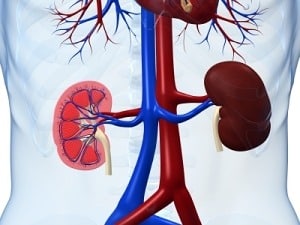
Finally, CVC use is believed to result in excess mortality in patients on hemodialysis. However, recent data suggest that CVC use is simply a surrogate marker of sicker patients who are more likely to die, rather than being a mediator of mortality” Allon (2019) Abstract: This commentary critically examines key assumptions and recommendations in the […]
Innovations in vascular access for hemodialysis
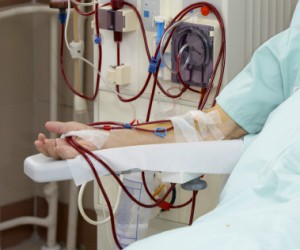
Worldwide, hemodialysis remains the prevalent dialysis modality for more than 2 million patients who require well-functioning vascular access for this procedure” Agarwal et al (2019). Abstract: Worldwide, hemodialysis remains the prevalent dialysis modality for more than 2 million patients who require well-functioning vascular access for this procedure. Creation of an arteriovenous fistula for long-term hemodialysis […]
Current state of dialysis treatment and vascular access management in Japan

According to the data from the Japanese Society for Dialysis Therapy, the number of dialysis patients was about 330,000 at the end of 2016″ Sato et al (2019). Abstract: According to the data from the Japanese Society for Dialysis Therapy, the number of dialysis patients was about 330,000 at the end of 2016. The mean […]
Infective endocarditis in chronic hemodialysis patients

Patients requiring chronic dialysis are at increased risk for a severe complication such as Infective Endocarditis (IE)” Spaleniak et al (2019). Abstract: Patients requiring chronic dialysis are at increased risk for a severe complication such as Infective Endocarditis (IE). Infections, immediately after cardiovascular diseases, are the second leading cause of deaths in this group of […]
Relationships to central venous catheters and cardiac implantable devices

The appropriate vascular access for hemodialysis in patients with cardiac implantable electronic devices (CIED) is undefined. We describe two cases of end-stage renal disease patients with CIED and tunneled central venous catheter (CVC) who developed venous cava stenosis” Pacilio et al (2019). Abstract: The appropriate vascular access for hemodialysis in patients with cardiac implantable electronic […]
Refugee dialysis is a worldwide growing dilemma with limited experience

This study with the largest number of Syrian refugees undergoing maintenance hemodialysis showed good dialysis practices, acceptable values for dialysis adequacy and biochemical parameters along with lower mortality compared to native HD population of Turkey” Gursu et al (2019). Abstract: BACKGROUND/AIMS: Refugee dialysis is a worldwide growing dilemma with limited experience. This report presents the […]
Medial claviculectomy for the treatment of recalcitrant central venous stenosis

Medial claviculectomy is an effective treatment of recalcitrant central venous stenosis of the thoracic outlet” Auyang et al 92019). Abstract: OBJECTIVE: Outflow tract stenosis is the leading cause of hemodialysis access loss. Many lesions are highly resistant to endovascular treatment, necessitating open surgical intervention. We present our experience using medial claviculectomy for treatment of recalcitrant […]
Advantages and disadvantages of vascular access choice in hemodialysis
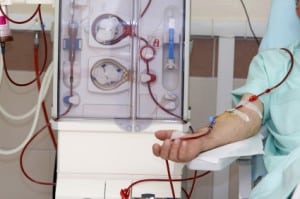
We present the advantages and disadvantages of each vascular access, as well as their main local (thrombosis, infection, steal syndrome) and systemic (heart failure, pulmonary hypertension) complications, which may also be encountered by primary care physicians” Pivin et al (2019). Abstract: The most frequent dialysis modality in Switzerland is hemodialysis. Patients need a proper vascular […]
Increased risk of Staphylococcus aureus bacteremia in hemodialysis

Staphylococcus aureus bacteremia (SAB) is a high-risk infection and feared complication related to hemodialysis. This study aimed to investigate incidence and risk factors for SAB depending on hemodialysis access type” Chaudry et al (2019). Abstract: INTRODUCTION: Staphylococcus aureus bacteremia (SAB) is a high-risk infection and feared complication related to hemodialysis. This study aimed to investigate […]
Case study describes hemodialysis catheter-induced bradycardia

We describe a case of recurrent symptomatic intra-dialytic bradycardia due to abnormal positioning of CVC that resolved after the repositioning of the catheter” Sitaula et al (2019). Abstract: Sudden cardiac death (SCD) is reported as leading cause of death in patients on chronic hemodialysis. Arrhythmias are proposed to be a major predisposing factor for SCD. […]
Frequency of central vein stenosis in hemodialysis patients

Adverse effects of this type of dialysis access include central venous stenosis, for which the risk factors and consequences are incompletely understood” Adwaney et al (2019). Abstract: BACKGROUND AND OBJECTIVES: Central venous catheters have traditionally provided access for urgent hemodialysis, but are also sometimes advocated as an option for older or more comorbid patients. Adverse […]
Radiographic appearance of central venous split-tip hemodialysis catheter
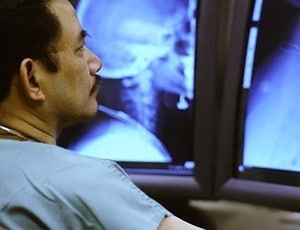
It is essential to be aware of the normal imaging appearances of these catheters as they may simulate pathological appearance due to the shape of their tips. This knowledge will help avoid misdiagnosis and unnecessary medical interventions” Sarv and Simon (2019). Abstract: Long-term cuffed hemodialysis catheters are being increasingly used in the management of patients […]
Vascular access audit in home hemodialysis patients

Vascular access audit is a feasible quality initiative, which leads to a decrease in the number of patient reported errors in vascular access” Dhruve et al (2019). Abstract: INTRODUCTION: Vascular access complications are associated with increased morbidity and mortality in home hemodialysis (HHD). Nurse-administered vascular access checklist is a feasible quality improvement strategy aimed to […]
Vascular access outcomes in patients on hemodialysis

Vascular access dysfunction is a major cause of morbidity in patients with end-stage renal disease (ESRD) on hemodialysis (HD). Thus, identifying risk factors for vascular access failure is important” Kim et al (2019). Abstract: INTRODUCTION: Vascular access dysfunction is a major cause of morbidity in patients with end-stage renal disease (ESRD) on hemodialysis (HD). Thus, […]
Stenosis and thrombosis-unveiled complications of buttonhole cannulation

We discuss two cases of stenosis and thrombosis related to buttonhole puncture which heralded angiography intervention, raising awareness for the demand of close surveillance of arteriovenous fistulae when using buttonhole cannulation” Moreira et al (2019). Abstract: The vascular access is the mainstay of hemodialysis. Arteriovenous fistula has been prioritized as the first choice of long-term […]
Left femoral artery to right femoral vein bypass graft for hemodialysis access

The purpose of this case report was to describe our experience in creating a prosthetic graft between left femoral artery and right femoral vein in a patient with history of central venous occlusion and bilateral femoral neck fracture” Wang et al (2019). Abstract: RATIONALE: As survival prospects improve for long-term patients with hemodialysis, it is […]
Vascular access for hemodialysis in the elderly

The objective of this study was to compare the outcomes of arteriovenous fistulas (AVFs) with arteriovenous grafts (AVGs) in a large population-based cohort of elderly patients in the United States” Arhuidese et al (2019). Abstract: OBJECTIVE: The objective of this study was to compare the outcomes of arteriovenous fistulas (AVFs) with arteriovenous grafts (AVGs) in […]
Complications associated with central venous access for hemodialysis in cancer patients

Central venous catheter implantation for hemodialysis is commonly performed in large centers and its complications are sometimes associated with insufficient training of those who perform it, but may also be related to the patient’s clinical condition” Silva (2018). Abstract: Central venous catheter implantation for hemodialysis is commonly performed in large centers and its complications are […]
Buttonhole versus stepladder cannulation for home hemodialysis

Our primary objective was to determine the feasibility of randomizing patients with ESKD training for home hemodialysis to buttonhole versus stepladder cannulation of the AVF. Secondary objectives included training time, pain with needling, complications, and cost by cannulation technique” Huang et al (2019). Abstract: BACKGROUND AND OBJECTIVES: Canadian home hemodialysis guidelines highlight the potential differences […]
Review of complications from tunneled hemodialysis catheters

Approximately one-third of hemodialysis patients who used tunneled CVCs during 1 to 2 years experienced complications” Poinen et al (2019). Abstract: RATIONALE & OBJECTIVE: Clinical practice guidelines discourage the use of central venous catheters (CVCs) for vascular access in dialysis. However, some patients have inadequate vessels for arteriovenous fistula creation or choose to use a […]
Hemodialysis vascular access options in the elderly

Choosing the optimal hemodialysis vascular access for the elderly patient is best achieved by a patient-centered coordinated multidisciplinary team approach that aligns the patient’s end-stage kidney disease Life-Plan” Viecelli and Lok (2019). Abstract: Choosing the optimal hemodialysis vascular access for the elderly patient is best achieved by a patient-centered coordinated multidisciplinary team approach that aligns […]
Review of vascular access for hemodialysis

A well-functioning vascular access is a mainstay to perform an efficient hemodialysis procedure, which directly affects the quality of life in hemodialysis patients” Dinh and Nguyen (2018). Abstract: A well-functioning vascular access is a mainstay to perform an efficient hemodialysis procedure, which directly affects the quality of life in hemodialysis patients. We use three main […]
One-sheath inverse method in vascular access intervention therapy for hemodialysis

A one-sheath inverse method is useful. We hope that the technique will be more widely recognized, allowing the technique to be applied to more cases” Takashima et al (2018). Abstract: INTRODUCTION: Vascular access intervention therapy (VAIVT) is an essential interventional therapy in the field of hemodialysis therapy that allows for the long-term vascular access functionality […]
Patency rate of Arteriovenous Fistula created for hemodialysis

Careful preoperative patient assessment, optimal surgical techniques, and adequate postoperative care play an important role for the favorable outcome. The primary patency rate in male hemodialysis patients was significantly higher than in female patients” Tjang and Sumadi (2018). Abstract: Introduction: Clinical practice guidelines endorse the arteriovenous fistula as the preferred form of vascular access. Concerns […]

